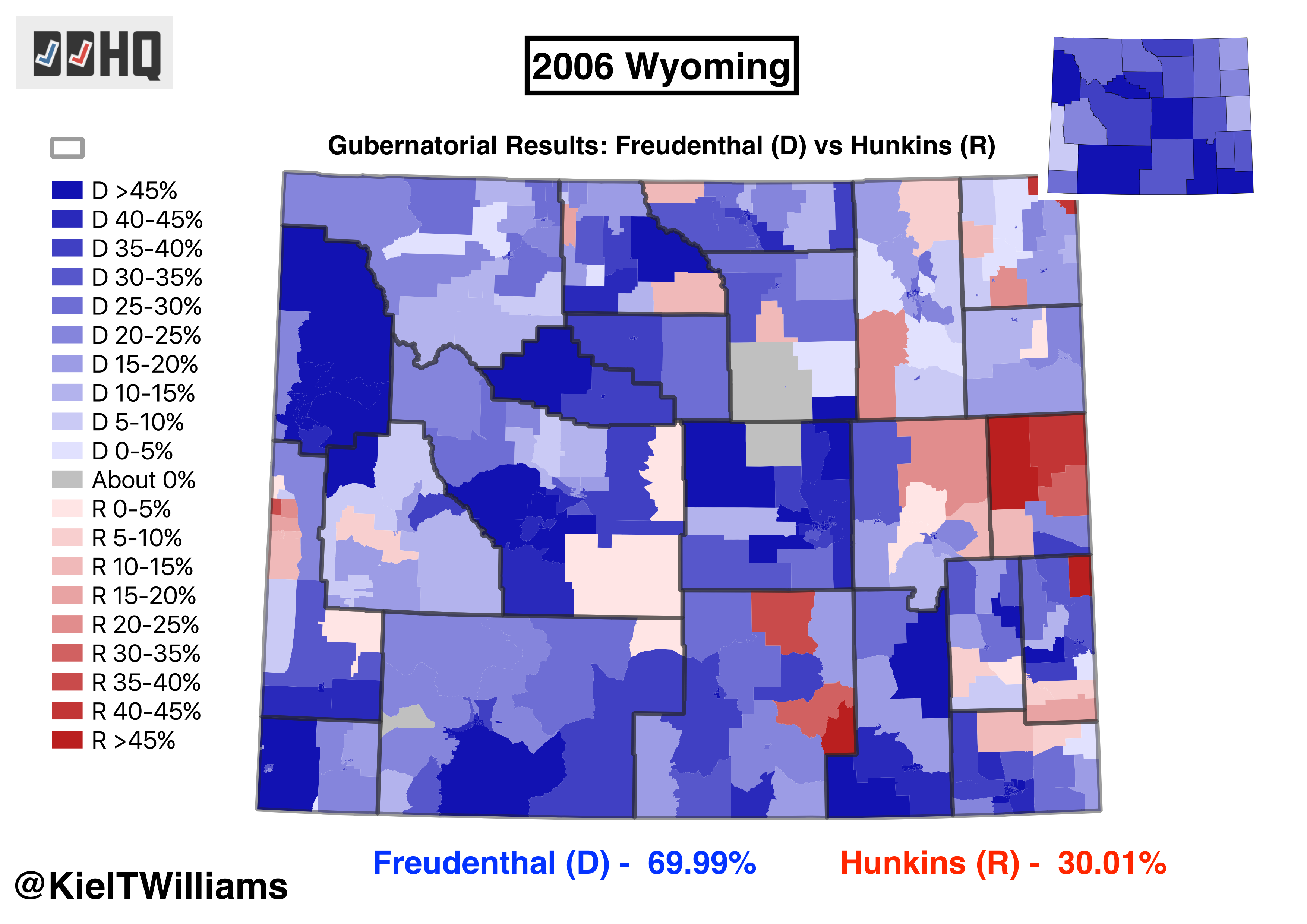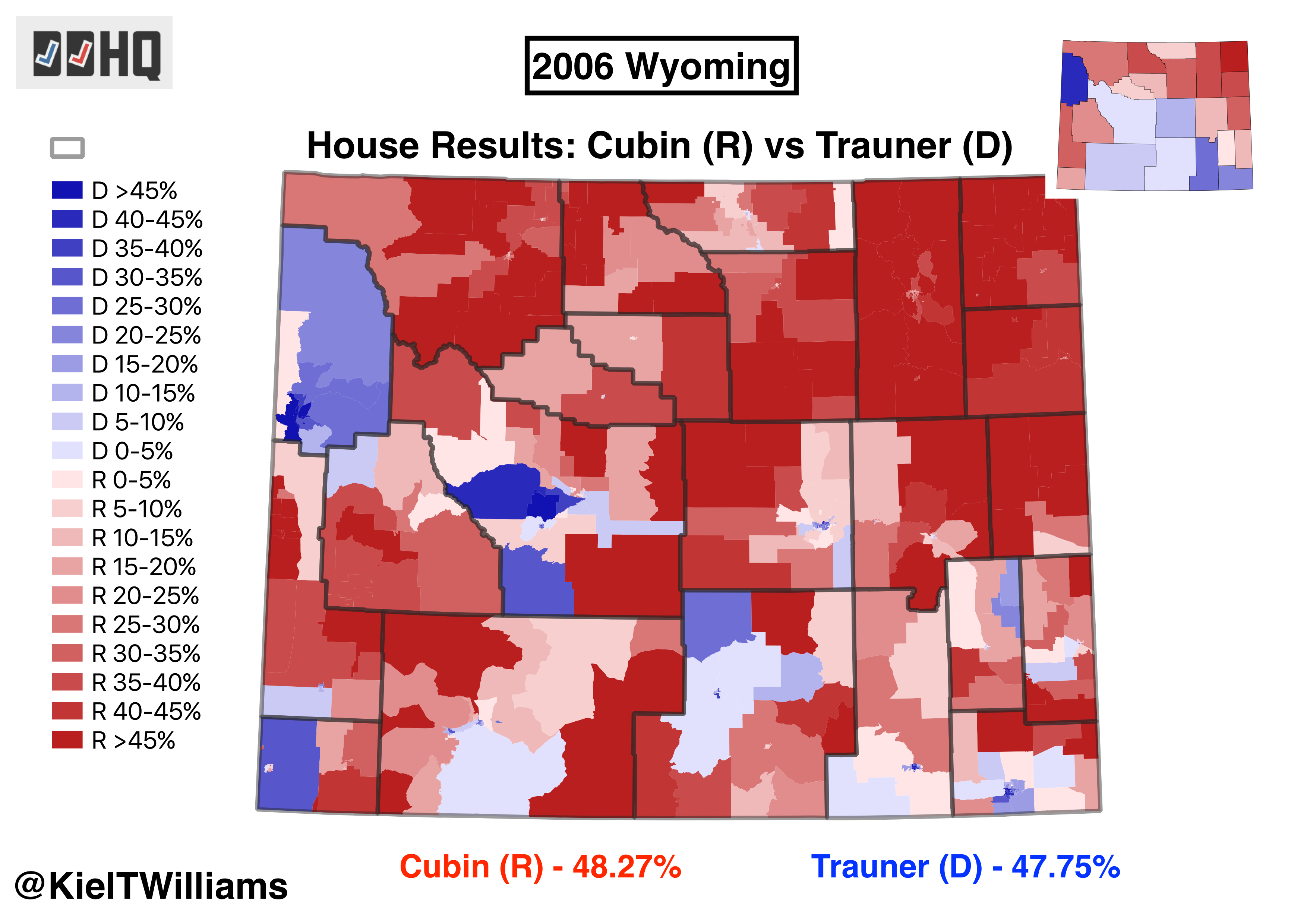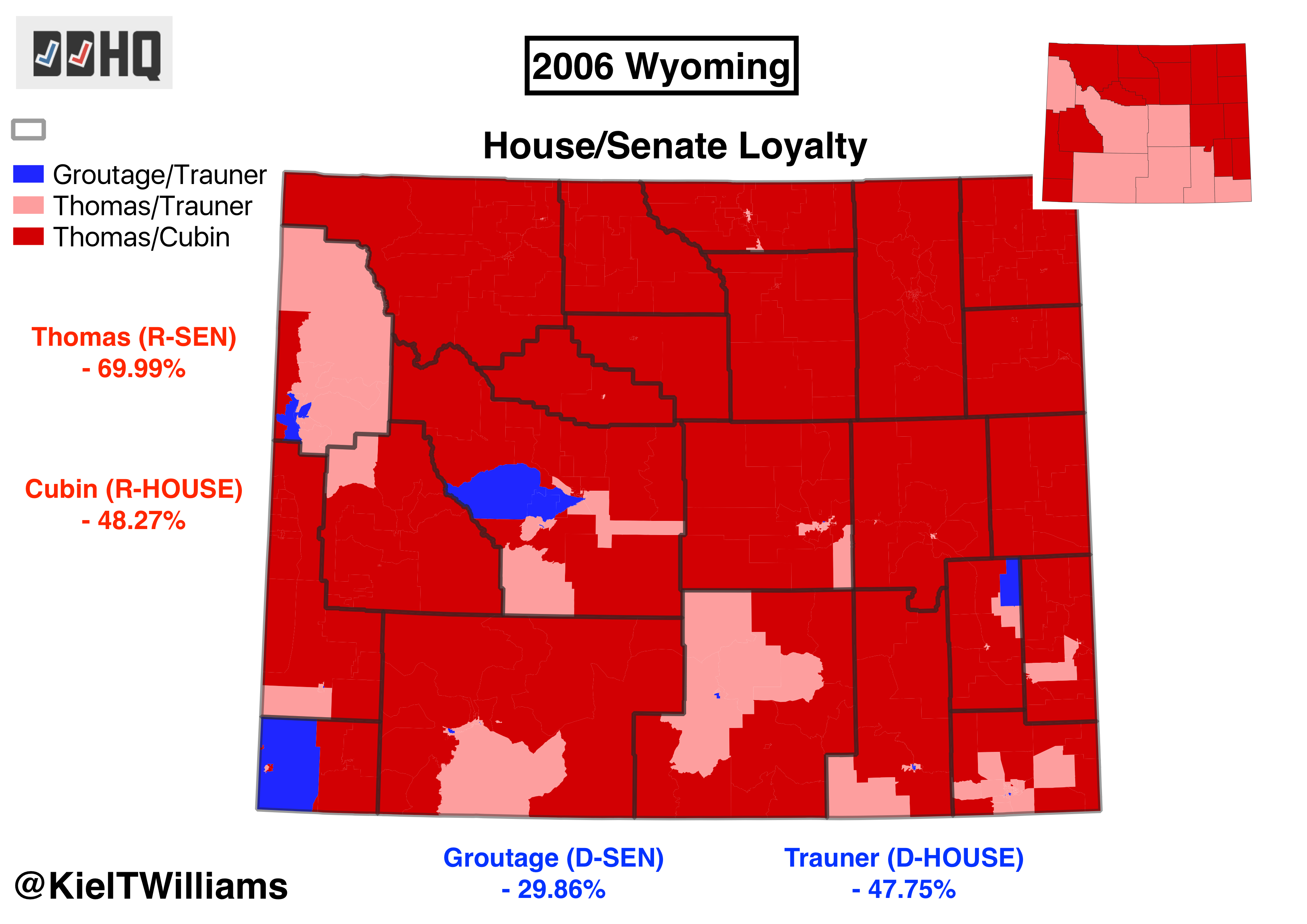On Tuesday, voters in Wyoming will nominate candidates for state and Congressional elections. Popular incumbent governor Matt Mead (R) is prevented from running again due to term limits, guaranteeing an open-seat in the gubernatorial race. Wyoming is often seen (correctly) as one of the most staunchly Republican states in the country, and few – if any – of these races are likely to be competitive in November. Wyoming has not sent a Democrat to Congress since Rep. Teno Roncalio left office in 1978.
That being said, Wyoming does occasionally feature competitive statewide races. As recently as 2006, Wyoming reelected a popular Democratic governor, and came within a single point of electing a Democrat to its single House seat.

Dave Freudenthal (D) – Wyoming governor between 2002 and 2010 – was one of the most popular governors in the country during the George W. Bush Era. During his 2006 reelection, he carried every county in the state and defeated his opponent – attorney Ray Hunkins – by nearly 40 points. In a state like Wyoming, that means winning in some extremely rural (and extremely white) areas. There’s no secret to how Freudenthal accomplished this: he aggressively worked across the aisle in his Republican-dominated state. And later in his tenure, he didn’t hesitate to take shots at the Obama Administration over environmental issues. One might draw contemporary parallels between Freudenthal and people like Charlie Baker (R-MA) and Phil Scott (R-VT): centrist governors who bucked their national party enough to remain popular in otherwise hostile territory.

On the other end of the spectrum, 2006 also saw Craig L. Thomas (R) easily reelected to his 3rd term as Wyoming Senator. Thomas’ performance was much more typical of a Republican in Wyoming, defeating Navy engineer (and fantasy author) Dale Groutage (D) by over 40 points. Groutage was destroyed in the state’s vast rural regions. Even in Wyoming’s small urban centers, Groutage received only tepid support.

Perhaps the most interesting statewide Wyoming race of 2006 – indeed, perhaps the most interesting statewide Wyoming race in over a decade – was the election for Wyoming’s single House seat. Businessman Gary Trauner (D) came within 1 point of unseating incumbent Rep. Barbara Cubin (R). Trauner probably ran under the best possible circumstances for a Wyoming Democrat: the national environment in 2006 was very strong for Democrats, he shared his ballot with a beloved Democratic governor, and his opponent came under fire for habitually missing Congressional votes. Despite his loss, Trauner’s map probably paints the most realistic portrait for how a Democrat might win in Wyoming: run-up significant margins in the cities of Cheyenne, Casper, and Laramie, and avoid a total wipe-out in the southern half of the state.

A comparison between Groutage and Trauner’s maps throws this into sharper relief. By winning the outlying areas around Wyoming’s small cities – and doing somewhat better in southern rural regions – Trauner remained competitive with Cubin. But this is no small feat for a Democrat in a state as rural – and racially homogeneous – as Wyoming.
Gary Trauner is attempting his third run at statewide office in this year’s Senate primary, after narrowly losing his 2006 House race, and then losing his 2008 House race by a more convincing 9.8-point margin. As the only serious Democratic candidate in the field, he should have a lock on the nomination. However, he’s nearly certain to face incumbent Senator John Barrasso (R) in the general election. Barrasso has remained quite popular in Wyoming, and has raised over ten-times as much money as Trauner. The Øptimus model currently gives the GOP a 98% chance of retaining the seat.
Democrats’ hopes of challenging incumbent Rep. Liz Cheney (R) for Wyoming’s House seat appear even more bleak. She faces only nominal opposition in her primary, and should be a lock for renomination. In contrast, the only Democrats running for the seat – Travis Helm and Greg Hunter – do not appear to have raised any money, and do not appear to be waging serious campaigns. The Øptimus model currently gives Republicans a 97% chance of maintaining control of the seat.
Finally, the Republican gubernatorial primary appears to be a close contest between Foster Friess and Mark Gordon. Businessman Foster Friess – who might be best known for his financial support of Rick Santorum during the 2012 Presidential campaign – has received the endorsements of Donald Trump Jr. and various outside conservative groups. Meanwhile, incumbent state treasurer Mark Gordon has received support from much of the Wyoming Republican establishment, including the endorsement of former Senator Alan Simpson (R). While polling has been sparse on the Democratic side, the most serious candidate appears to be Mary Throne, former Minority Leader of the Wyoming House of Representatives. Most national forecasters rate the gubernatorial election as solidly Republican.